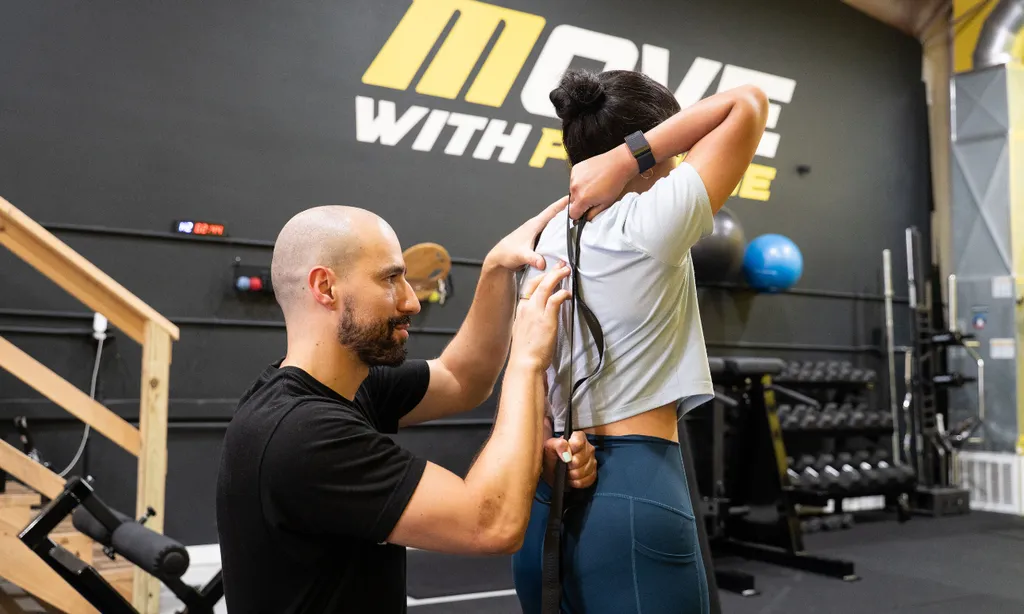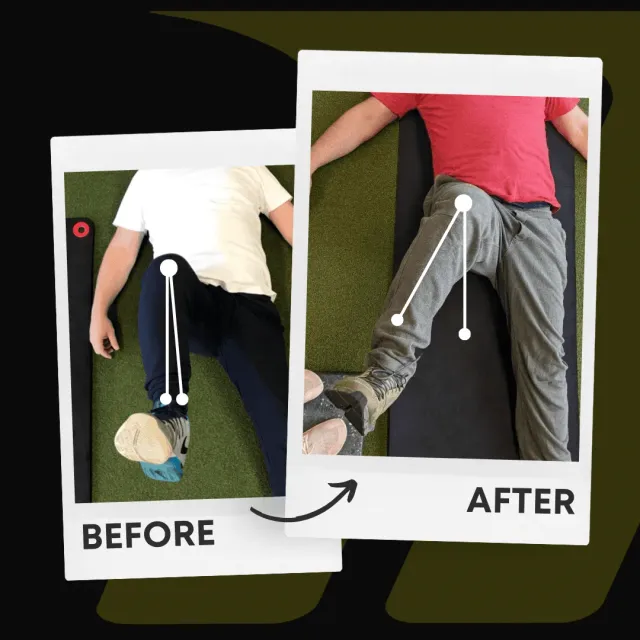Warm-Ups: Make Them Broadly-Specific
January 12, 2022 | Functional Range Conditioning

Warm-ups aren’t controversial, but they are inconsistent. If you ask ten coaches how they prepare their clients for a workout, you’ll get ten different answers. Some rely on foam rolling, others default to treadmills, and some stick to dynamic stretching. All of those methods have merit, but you can dramatically improve your results by making your warm-ups both broad and specific.
Doing Anything Is Better Than Nothing
The baseline is movement. Walking on a treadmill, hopping on a bike, or cycling through light mobility work generates heat and prepares tissues for action. Foam rolling can also be beneficial—it increases blood flow and reduces stiffness in the short term.
But here’s the real question: is that enough to set you up for the best training session possible? Context matters.
The Physiology of Warming Up
When you begin moving, several key changes happen in the body:
- Vasodilation: blood vessels expand to improve circulation.
- Improved nerve response: tissues conduct signals more efficiently, enhancing force production and reaction times.
- Reduced stiffness: warm muscles and connective tissues allow greater range of motion.
The science is clear—warm-ups should be designed to generate heat, enhance circulation, and facilitate improved movement. The problem is that most warm-ups stop there. They don’t answer the question: what does your body actually need?
Patterns vs. Joints
Many programs prepare you for movement patterns—push, pull, squat, hinge—but skip the critical question of whether your joints can actually handle those positions. For example, do your shoulders have the range to press overhead? Do your hips rotate enough to support a deep squat?
Generic warm-ups assume the answer is yes. Smart warm-ups test the answer first.
Controlled Articular Rotations (CARs)
That’s where Controlled Articular Rotations come in. CARs are slow, intentional joint circles that explore the full workspace of each joint. They’re diagnostic and preparatory—revealing limitations while warming tissues at the same time.
At Motive Training, we use CARs as the universal starting point for warm-ups. They check the health of your shoulders, hips, spine, and more while priming those same joints for work. If you want to experience them in a structured setting, KINSTRETCH Online is built entirely around CARs and joint-specific training.
Broad First, Specific Second
CARs act as your broad warm-up. They get blood flowing, engage deep joint tissues, and give you feedback about what’s tight, weak, or uncoordinated. From there, you can zero in on specifics.
- Struggling with shoulder rotation during CARs? Follow with scarecrows or banded external rotations.
- Noticing scapular protraction feels limited? Add banded face pulls or wall slides.
- Hips feel locked up? After hip CARs, work into 90/90 transitions or hip airplanes.
- Ankles don’t articulate well? Target dorsiflexion with tibialis raises or weighted calf stretches.
- Spine feels rigid? Add segmental cat-camels or low back mobility drills.
The point isn’t to pick random corrective drills—it’s to let CARs tell you where to go next.
The Three-Step Framework
Here’s how to structure your warm-up every time:
- Start broadly: Perform CARs for the joints you use most frequently. On an upper-body day, that means shoulders, scapula, elbows, and spine. For the lower body, target the hips, knees, ankles, and toes.
- Go specific: Choose one or two drills to address the ranges that felt limited during CARs. If your hips didn’t rotate well, 90/90s or internal rotation lifts are the natural next step.
- Finish broad again: Add global, pattern-based movements—such as push-ups, squats, hinges, or carries—to generate heat and transition into your training session.
This approach ensures you’re not just warm—you’re ready.
Warm-Ups in Austin: Why Local Context Matters
If you train in Austin, you know the environment matters. Hot summer days make it easy to skip warm-ups because you already feel warm, but your joints still need prep. CARs give you that targeted activation. On cooler mornings, when stiffness lingers, a full sequence of CARs followed by dynamic patterns makes the transition smoother.
Outdoor training at Zilker Park or the Greenbelt adds another layer. Uneven ground can challenge the ankles, hips, and knees. A joint-specific warm-up beforehand can reduce the chance of tweaks while hiking, running, or playing pickup games. Simply put, broad-to-specific warm-ups are not just for the gym—they’re a practical tool for Austin’s active lifestyle.
Austin’s tech workers face another challenge: hours of sitting. Long desk days leave hips, shoulders, and spines stiff. For these clients, CARs are non-negotiable before training—they reintroduce movement to areas that have been locked in place all day. It’s no surprise that many of our mobility coaching clients cite warm-ups as the turning point in reducing pain and boosting energy.
Client Stories: Why It Works
Warm-ups aren’t theoretical—they directly impact how you move and feel.
- Pain & Injury Conquerors: One client dealing with chronic back pain found that adding CARs and targeted spinal warm-ups allowed her to train without flare-ups. Over time, the warm-up itself became a tool for pain relief.
- Athletic Performance Seekers: A competitive pickleball player discovered that ankle CARs, combined with dorsiflexion drills, improved his agility on the court and reduced post-match soreness.
- Lifestyle Enhancers: A South Austin professional in his 40s, who sits most of the day, reported that five minutes of shoulder and hip CARs before workouts left him feeling more energized than caffeine ever did.
These aren’t exceptions—they’re examples of why a personalized warm-up beats a cookie-cutter one.
Why Personalization Wins
I’m not handing you a universal list of drills outside of CARs for one reason: I don’t know what your body needs. That’s why we use the Functional Range Assessment with every client. FRA evaluates your joint health from head to toe and provides us with a roadmap for building personalized warm-ups and workouts.
If you’re in Austin, mobility coaching at Motive Training can help you eliminate guesswork entirely. If you’re training online, our KINSTRETCH classes are the next best step. Either way, the process is the same: assess, warm up, and train with intent.
Putting It All Together
A broadly-specific warm-up does three things:
- Raises body temperature.
- Explores joint function.
- Targets limitations before patterns.
That’s what separates a treadmill stroll from a professional warm-up. It’s also why our clients—from athletes looking to prevent injury to everyday people seeking to improve their well-being—consistently move and perform at a higher level.
If you’re ready to make your warm-ups more effective, let us be your personal trainers in Austin. If you’re not local, explore KINSTRETCH Online and bring CARs into your daily routine.
FAQs About Warm-Ups
Do I need to foam roll before every workout?
No. Foam rolling can temporarily reduce stiffness, but it doesn’t replace joint-specific warm-ups. CARs and targeted drills do more to prepare your body.
How long should a warm-up take?
Five to fifteen minutes is enough. The key is efficiency: start broad with CARs, address your sticking points, and finish with global patterns.
Is stretching the same as mobility training?
No. Stretching often improves passive flexibility. Mobility training is active—it builds usable range of motion and strength in your joints. That’s why CARs are so effective.
Can warm-ups prevent injuries?
They can’t guarantee you’ll never get injured, but they drastically reduce risk. By preparing tissues and exploring ranges of motion before loading them, you train your body to handle stress safely.
References:
- A Meta-Analysis of the Effects of Foam Rolling on Performance and Recovery
- Warm-Up Strategies for Sport and Exercise: Mechanisms and Applications
Written by
Brian Murray, FRA, FRSC
Founder of Motive Training
We’ll teach you how to move with purpose so you can lead a healthy, strong, and pain-free life. Our headquarters are in Austin, TX, but you can work with us online by signing up for KINSTRETCH Online or digging deep into one of our Motive Mobility Blueprints.




